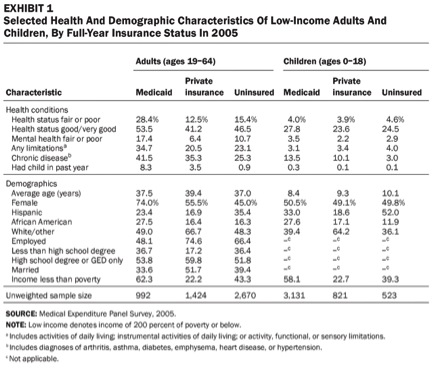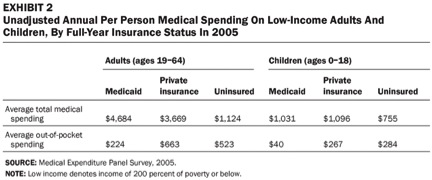The False Promise of Electronic Medical Records (EMR)
Stanley Feld M.D. FACP,MACE
The
promise of the Electronic Medical Record (EMR) is fading for physicians and
patients. The EMR was supposed to reduce the cost of medical care, improve
quality of care, improve physician communications, reduce duplicate testing and
improve efficiency of care.
In
2009 President Obama declared that EMRs,
“would
save some $80 billion a year, safeguard against medical errors, reduce
malpractice lawsuits, and greatly facilitate both preventive care and ongoing
therapy of the chronically ill.”
EMR’s have
done none of the above. EMRs have been a money-loser for most physicians.
I
had predicted that fully functioning EMRs were too expensive for most
practicing physicians. EMRs bought in the past were not fully functional.
Therefore physicians would have to purchase new fully functional EMRs.
Physicians
understand that all data collected, whether accurate or not, has been used
against them in the past. They are hesitant to provide more data at their own
expense that compromise the privacy of their patients and potentially harm their
own reputation.
They
would be happy to participate in the project if the EMR improved their ability
to serve their patients without a potential penalty.
Physicians
suspect there is another agenda underlying President Obama’s insistence on the
adoption of EMRs.
It
is clear the government and healthcare insurance industry want to control the
healthcare system. As the payers they do not want the physician/patient
relationship to control the healthcare system.
A
recent survey from
forty-nine community practices in a large EHR pilot study by the Massachusetts
eHealth Collaborative studied the projected five-year financial returns on
investment to physicians’ practices. It was published in Health Affairs.
The
survey concluded,
We found that the average
physician would lose $43,743 over five years; just 27 percent of practices
would have achieved a positive return on investment; and only an additional
14 percent of practices would have come out ahead had they received the
$44,000 federal meaningful-use incentive.
Only a few practices would
have had EMR’s that qualified for the Obama administrations meaningful –use
incentives. The Obama administration’s criteria for meaningful-use are too
strict and complex for EMR software that physicians can afford.
More amazing is that the
only way for a practice to have a positive cash return on investment for their
EMR is to game the healthcare system using their EMR. The resulting cost of
medical care would rise.
“The largest difference between practices with
a positive return on investment and those with a negative return was the extent
to which they used their EHRs to increase revenue, primarily by seeing more
patients per day or by improved billing that resulted in fewer rejected claims
and more accurate coding.”
This does not constitute an improvement in medical care. It also
contradicts the idealistic advantages of the electronic medical record.
The survey concludes that current meaningful-use incentives
alone may not ensure a positive return on investment from EMR adoption.
The authors suggest,
“Policies
that provide additional support, such as expanding the regional extension
center program, could help ensure that practices make the changes required to
realize a positive return on investment from EHRs.”
The government and
healthcare insurance industry’s goal is to reduce physicians’ reimbursement for
those physicians that do not meet Obamacare’s imposed criteria for quality
medical care. These criteria will be set by IPAB.
Many physicians in practice object to converting medical care
into a commodity. Medical care is a very personal and complex interaction.
I have said previously that about 50% of the therapeutic index
(therapeutic effect) is determined by the patient physician relationship.
"We need to move to EHR forward for a number of reasons,
but if I am a small practice I am going to really think about a few
things," she says. "One is how to decrease the cost of adoption and
the cost of the system itself.
“ To the
extent you can reduce the upfront cost that is going to help bring down the
amount you have to figure out how to make up elsewhere. Increasingly there are
new models taking this into account for small practices to decrease the big
upfront costs."
There are two basic problems, cost and the real purpose of EMRs.
Both can be remedied.
The costs of an EMR to a medical practice can be remedied
easily. My ideal electronic medical
record could reside in the cloud. It would be available at no cost to physicians.
The patient data would be fully secured and only used by patients and their
physicians.
Physicians would pay for its use by the click. The EMRs would be
maintained and updated for free.
The EMRs could only be used for physician education purposes and
not for penalizing physicians.
If there is a terrible physician in the community a way needs to
be found to deal with that physician within his community. This is where
consumer driven evaluation would work.
Lost in this discussion is the real politics of EMRs.
Jerome Groopman and Pamela Hartzmen
wrote,
“The
electronic medical record (EMR) is touted as the key to containing costs,
reducing errors, improving quality, and simplifying administration: an “elegant
exercise in wishful thinking
Dr. Groopman and Pamela Hartzman debunk the 2005 RAND study that
led to this belief by President Obama. They show that there is little evidence
to support the president’s belief.
Dr. Groopman claims the RAND study is self serving to software
companies that sponsored the study.
Allscripts
Healthcare Solutions , the Cerner Corporation and Epic Systems of Verona, Wis. are the major EMR software companies.
“In February 2009, after years of behind-the-scenes lobbying by
Allscripts and others, legislation to promote the use of electronic records was
signed into law as part of President Obama’s economic stimulus bill.
“But today, as doctors and hospitals struggle to make new records
systems work, the clear winners are big companies like Allscripts that lobbied
for that legislation and pushed aside smaller competitors.”
At Allscripts healthcare solutions,
annual sales have more than doubled from $548 million in 2009 to an estimated
$1.44 billion last year, partly reflecting daring acquisitions made on the bet
that the legislation would be a boon for the industry.
At the Cerner Corporation of Kansas City, Mo., sales rose 60 percent during that
period. With money pouring in, top executives are enjoying Wall Street-style
paydays.
Current and former industry executives say that
big digital records companies like Cerner, Allscripts and Epic Systems of
Verona, Wis., have reaped enormous rewards because of the legislation they
pushed for
The weird thing is many of
these EMR systems bought by large hospital systems are not fully functional
(meaningful-use). The EMRs are requiring additional hospital system outlays of
cash to make them fully functional.
These costs are passed on to
the consumer.
The president
and his health-care team have yet to address these difficult and pressing
issues. Our culture adores technology, so it is not surprising that the
electronic medical record has been touted as the first important step in curing
the ills of our health-care system. But it is an overly simplistic and
unsubstantiated part of the solution.
It is important to note Drs. Groopman and Hartzman total and
refreshing frankness.
We both voted for President Obama, in part because of his
pragmatic approach to problems, belief in empirical data, and openness to
changing his mind when those data contradict his initial approach to a problem.
We need the president to apply scientific rigor to fix our
health-care system rather than rely on elegant exercises in wishful thinking.
Please note that Drs. Groopman and Hartzman said it not
me.
I have said this many times in the past. The same statement
applies to the Obamacare in its entirety.
”We
need the president to apply scientific
rigor to fix our health-care system rather than rely on elegant exercises in
wishful thinking.”
The opinions expressed in the blog “Repairing The Healthcare System” are, mine and mine alone.
If you have enjoyed it please have a friend subscribe




http://aarongfyw.wordpress.com • September 29, 2013
Read this article to see the quotation will the very same way that if you accidently die in the middle and is suddenly at the mercy of the insurers charge identical premium rate. This agreement lasted until June of 2013. Of course there are auto insurance companies give a low introductory price to pull car insurance with dui you in. Meaning, if the current insurance company but low cost or cheaper rates may be much higher than expected.
Tutorials Make Mone With Link Shortener Adfly • October 18, 2013
Hey very interesting blog!